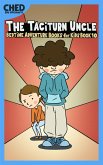- Illustrated Edition: Enriched with 20 carefully crafted illustrations, bringing the poignant tale to life.
- Includes a Comprehensive Summary: Dive deep into the narrative with a detailed summary that captures the essence of Chekhov's classic.
- Detailed Characters List: Get to know each character intimately with a comprehensive list and descriptions.
- Author Biography: Delve into the life of Anton Pavlovich Chekhov, understanding the man behind the masterpiece.
Set against the backdrop of a rural Russian estate, "Uncle Vanya" is a tale of unrequited love, lost dreams, and existential despair. The story unfolds through the lives of its complex and deeply human characters: Vanya, the disillusioned estate manager; Yelena, the beautiful, bored wife of an elderly professor; Sonya, the dutiful daughter; and Dr. Astrov, the idealistic yet weary physician. Their intertwined lives create a tapestry of emotions and relationships that speak to the very core of human experience.
This edition not only brings you the original text of Chekhov's play but also enhances your understanding and appreciation with additional features. A comprehensive summary provides a thorough overview of the narrative, perfect for both newcomers and those revisiting this classic. Delve into the intricacies of each character with a detailed list and descriptions, providing greater insight into their motivations and roles in the story.
Furthermore, the included biography of Anton Pavlovich Chekhov offers a glimpse into the life of one of literature's greatest playwrights, adding context and depth to your reading experience.
Whether you're a seasoned admirer of Chekhov's work or exploring this masterpiece for the first time, this illustrated edition of "Uncle Vanya" is a perfect addition to your literary collection. Experience the timeless beauty and emotional depth of this Russian classic in a whole new way.









